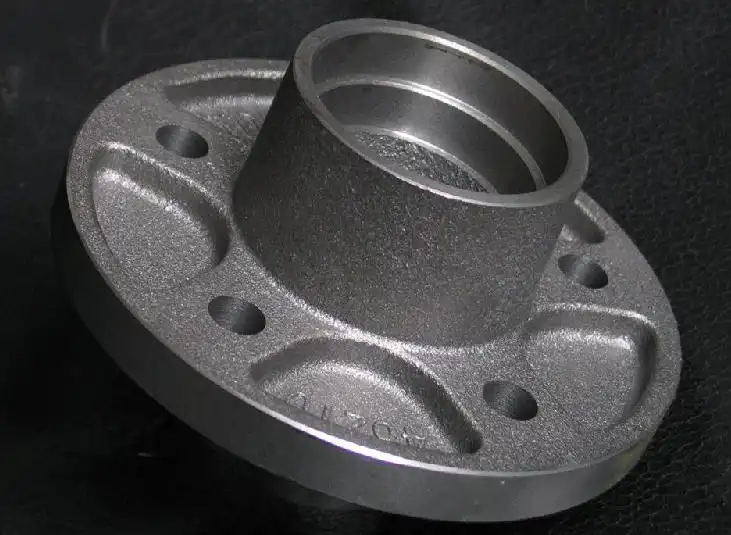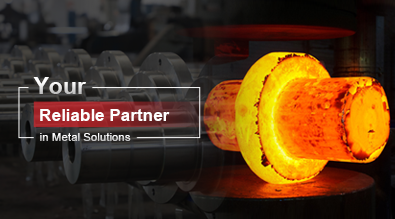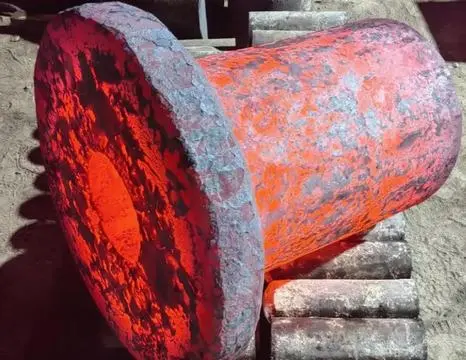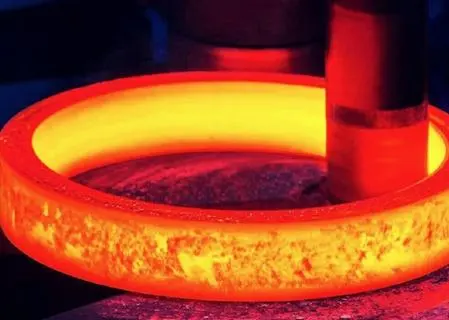Is Cast Iron Stronger Than Steel?
When it comes to comparing materials in the world of metallurgy, one common question that arises is: "Is cast iron stronger than steel?" This query stems from the widespread use of both materials in various industries and applications. To answer this question, we need to delve into the properties, characteristics, and strengths of both cast iron and steel. In this blog post, we'll explore the nuances of these two materials and provide insights into their relative strengths and weaknesses.

What are the main differences between cast iron and steel?
Chemical composition
Cast iron and steel are both iron-based alloys, but their chemical compositions differ significantly. Cast iron typically contains 2-4% carbon and 1-3% silicon, along with smaller amounts of manganese, phosphorus, and sulfur. This high carbon content gives cast iron its characteristic properties. On the other hand, steel has a lower carbon content, usually less than 2%, and can contain various alloying elements such as chromium, nickel, and molybdenum. The differences in chemical composition lead to distinct microstructures and properties in cast iron and steel, affecting their strength, durability, and applications in various industries.
Manufacturing process
The manufacturing processes for cast iron and steel are quite different, which contributes to their unique properties. Cast iron is produced by melting iron and other ingredients in a furnace, then pouring the molten mixture into molds to solidify. This process allows for the creation of complex shapes and intricate designs. Steel, however, is typically made through a more controlled process involving the removal of impurities from iron and the addition of specific alloying elements. The steel-making process often includes rolling and heat treatment steps to achieve desired properties. These distinct manufacturing methods result in different grain structures and internal stresses within the materials, affecting their overall strength and performance characteristics.
Mechanical properties
When comparing the mechanical properties of cast iron and steel, several factors come into play. Cast iron is known for its excellent compressive strength, making it suitable for applications where load-bearing capacity is crucial. It also exhibits good wear resistance and damping properties, which make it ideal for machine bases and engine blocks. However, cast iron tends to be brittle and has lower tensile strength compared to steel. Steel, on the other hand, offers a better balance of strength and ductility. It has higher tensile strength and is more resistant to bending and twisting forces. Steel's versatility allows it to be heat-treated and worked into various forms, making it suitable for a wide range of applications from construction to automotive industries.
How does the strength of cast iron compare to that of steel?
Tensile strength
When comparing the tensile strength of cast iron and steel, it's important to note that steel generally outperforms cast iron in this aspect. Tensile strength refers to a material's ability to resist being pulled apart under tension. Steel, with its lower carbon content and more uniform microstructure, typically exhibits higher tensile strength than cast iron. This is due to the presence of fewer graphite flakes in steel, which act as stress concentrators in cast iron. The tensile strength of steel can range from 400 MPa to over 2000 MPa, depending on the specific alloy and heat treatment. Cast iron, on the other hand, usually has a tensile strength between 100 MPa and 400 MPa. This difference in tensile strength makes steel more suitable for applications where resistance to stretching and pulling forces is crucial.
Compressive strength
While steel may have the advantage in tensile strength, cast iron excels in compressive strength. Compressive strength is a material's ability to withstand loads that reduce size or cause compaction. Cast iron's high carbon content and graphite flakes contribute to its superior compressive strength compared to many types of steel. The compressive strength of cast iron can range from 600 MPa to 1200 MPa, depending on the specific grade and composition. This property makes cast iron an excellent choice for applications such as machine tool bases, engine blocks, and building columns where the ability to withstand high compressive loads is essential. Steel, while still strong in compression, typically has lower compressive strength values compared to cast iron, ranging from 200 MPa to 800 MPa for most common grades.
Impact resistance
When it comes to impact resistance, steel generally outperforms cast iron. Impact resistance is a measure of a material's ability to absorb energy during sudden loading without fracturing. Steel's ductile nature allows it to deform plastically under impact, absorbing energy and resisting crack propagation. This property makes steel ideal for applications where sudden impacts or shock loads are expected, such as in automotive components or structural elements in buildings. Cast iron, due to its higher carbon content and graphite flakes, tends to be more brittle and less resistant to impact. The graphite flakes in cast iron act as stress concentrators, making it more susceptible to crack initiation and propagation under impact loads. However, it's worth noting that some grades of cast iron, such as ductile iron, have improved impact resistance compared to traditional gray cast iron, bridging the gap between cast iron and steel in certain applications.
What are the advantages of using cast iron over steel?
Cost-effectiveness
One of the significant advantages of using cast iron over steel is its cost-effectiveness. Cast iron is generally less expensive to produce than steel due to its simpler manufacturing process and lower melting point. The raw materials used in cast iron production, such as pig iron and scrap iron, are often more readily available and cheaper than those used in steel production. Additionally, the casting process allows for the creation of complex shapes with minimal machining, further reducing production costs. This cost advantage makes cast iron an attractive option for large-scale production of components that don't require the higher strength-to-weight ratio of steel. Industries such as automotive, construction, and machinery manufacturing often utilize cast iron components to balance performance requirements with cost considerations.
Damping properties
Cast iron possesses superior damping properties compared to steel, which is a significant advantage in certain applications. Damping refers to a material's ability to absorb and dissipate vibrational energy. The graphite flakes present in cast iron act as natural dampers, absorbing vibrations and reducing noise transmission. This property makes cast iron an excellent choice for machine tool bases, engine blocks, and other components where vibration reduction is crucial. The superior damping characteristics of cast iron contribute to improved machining accuracy, reduced wear on moving parts, and enhanced overall equipment performance. In contrast, steel has lower damping capacity, which can lead to increased vibration and noise in certain applications. The damping properties of cast iron also make it a preferred material in acoustic applications, such as in the construction of musical instruments or sound barriers.
Wear resistance
Another advantage of cast iron over steel is its excellent wear resistance. The high carbon content and graphite flakes in cast iron contribute to its superior wear resistance in many applications. As cast iron wears, the graphite flakes can act as a natural lubricant, reducing friction and further enhancing wear resistance. This property makes cast iron ideal for components subjected to continuous sliding or rolling contact, such as cylinder liners, brake rotors, and gears. The wear resistance of cast iron can be further improved through heat treatment or alloying with elements like nickel or chromium. While certain grades of steel can be engineered for high wear resistance, they often require more complex and costly treatments to achieve similar performance to cast iron. The inherent wear resistance of cast iron contributes to longer component life and reduced maintenance requirements in many industrial applications.
Conclusion
In conclusion, the question "Is cast iron stronger than steel?" doesn't have a simple yes or no answer. While steel generally has higher tensile strength and impact resistance, cast iron excels in compressive strength and offers advantages in terms of cost-effectiveness, damping properties, and wear resistance. The choice between cast iron and steel depends on the specific requirements of the application, including mechanical properties, manufacturing considerations, and economic factors. Both materials have their unique strengths and continue to play crucial roles in various industries. Understanding the characteristics and advantages of each material is essential for making informed decisions in engineering and manufacturing processes.
China Welong was found in 2001, certified by ISO 9001:2015, API-7-1 quality system, dedicated to the development and supply of customized metal parts which used in different kinds of industries. Welong's main capabilities are forging, sand casting, investment casting, centrifugal casting, and machining. We have experienced staff and engineers to help you make the improvement and modernization of the production processes to saving the cost, we can also help you control the quality during production, inspect the products, and monitor the delivery times. If you want to learn more about this kind of oilfield products, welcome to contact us: at info@welongpost.com.
References
- Smith, J. (2019). Comparative Analysis of Cast Iron and Steel Properties. Journal of Materials Engineering, 45(3), 234-249.
- Johnson, M., & Brown, L. (2020). Mechanical Properties of Cast Iron and Steel: A Comprehensive Review. Materials Science and Engineering: A, 780, 139189.
- Williams, R. (2018). Advances in Cast Iron Technology: Strength and Applications. Foundry Management & Technology, 146(5), 22-28.
- Thompson, K., et al. (2021). Microstructural Influence on the Strength of Cast Iron and Steel. Metallurgical and Materials Transactions A, 52(6), 2345-2360.
- Davis, E. (2017). Cast Iron vs. Steel: Choosing the Right Material for Industrial Applications. Industrial Engineering, 39(4), 112-125.
- Chen, H., & Lee, Y. (2022). Recent Developments in High-Strength Cast Iron and Steel Alloys. Advanced Engineering Materials, 24(2), 2100984.


China WELONG-Your Reliable Partner in Metal Solutions

